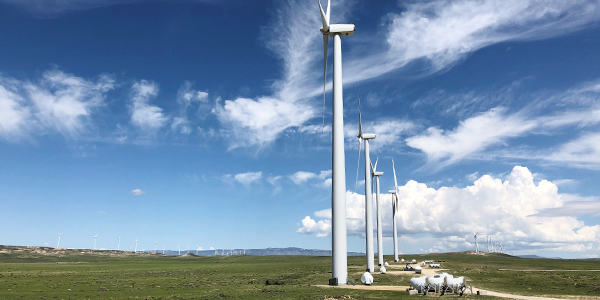The California Public Utilities Commission on Thursday approved a massive increase to its resource-needs projections, which CAISO will use in its transmission planning process for 2021/22, now underway.
The 28 GW of generation and storage resources the commission now sees the state needing by 2031 is more than triple the 9 GW it identified in last year’s projections for 2030. The latest resource portfolio from the CPUC calls for an additional 16 GW of in-state wind and solar, more than 9 GW of battery storage and 1 GW of wind from other states such as Wyoming and New Mexico.
“This base case goes far beyond what was transmitted to the ISO just a year ago,” Commissioner Clifford Rechtschaffen said. “For example, it doubles the generation capacity that’s included in the portfolio. Last year it was 9,000 MW, and this portfolio is 18,000 MW. And it adds over 9,000 MW of battery storage capacity, and this battery storage capacity is mapped to specific locations on the electric grid to minimize air pollutants in disadvantaged communities … to the extent possible.”
The additional resources are needed to compensate for the planned retirement of a half-dozen aging natural gas-fired plants and the state’s last nuclear generating station, Pacific Gas and Electric’s Diablo Canyon Power Plant, Rechtschaffen said. But the nameplate capacity of variable renewable resources must far exceed the capacity of the retiring thermal resources to meet the same load.
“In total, this decision ensures our grid can be ready for the procurement and interconnection of 28,000 MW of new resource capacity,” he said. “Just for some sense of scale and perspective, that’s the equivalent of 12 Diablo Canyon nuclear plants.”
The state is transitioning from fossil fuels to renewables as it seeks to meet the requirements of Senate Bill 100, passed in 2018. The bill required load-serving entities to supply retail customers with 60% clean energy by 2030 and 100% by 2045.
The transition led to shortfalls last summer, requiring CAISO to call for rolling blackouts in August, as solar ramped down in the evening but demand remained high during heat waves. Sufficient battery storage was not yet available to meet the evening’s net peak hour.
The state also has ambitious greenhouse gas reduction targets that the new resource planning portfolio tries to meet.
At the beginning of Thursday’s meeting, numerous public commenters said the state should do more to lower GHGs. The portfolio approved by the CPUC has a target of reducing GHGs to 46 million metric tons by 2031. Environmentalists and some PUC commissioners want to reduce GHGs to 38 MMTs in the same time frame.
That possibility will be studied as part of resource and transmission planning, Rechtschaffen said. In the meantime, generation and transmission upgrades will help meet the lower target, should it be adopted, he said.
“Results from the CAISO’s [transmission planning process] study of the base case portfolio will be used to identify future transmission investments,” the commission said. “These investments are intended to be ‘least regrets’ projects necessary to meet not only the base case needs, but also to support transition to subsequent base case portfolios with lower GHG targets, without resulting in stranded investments.”



